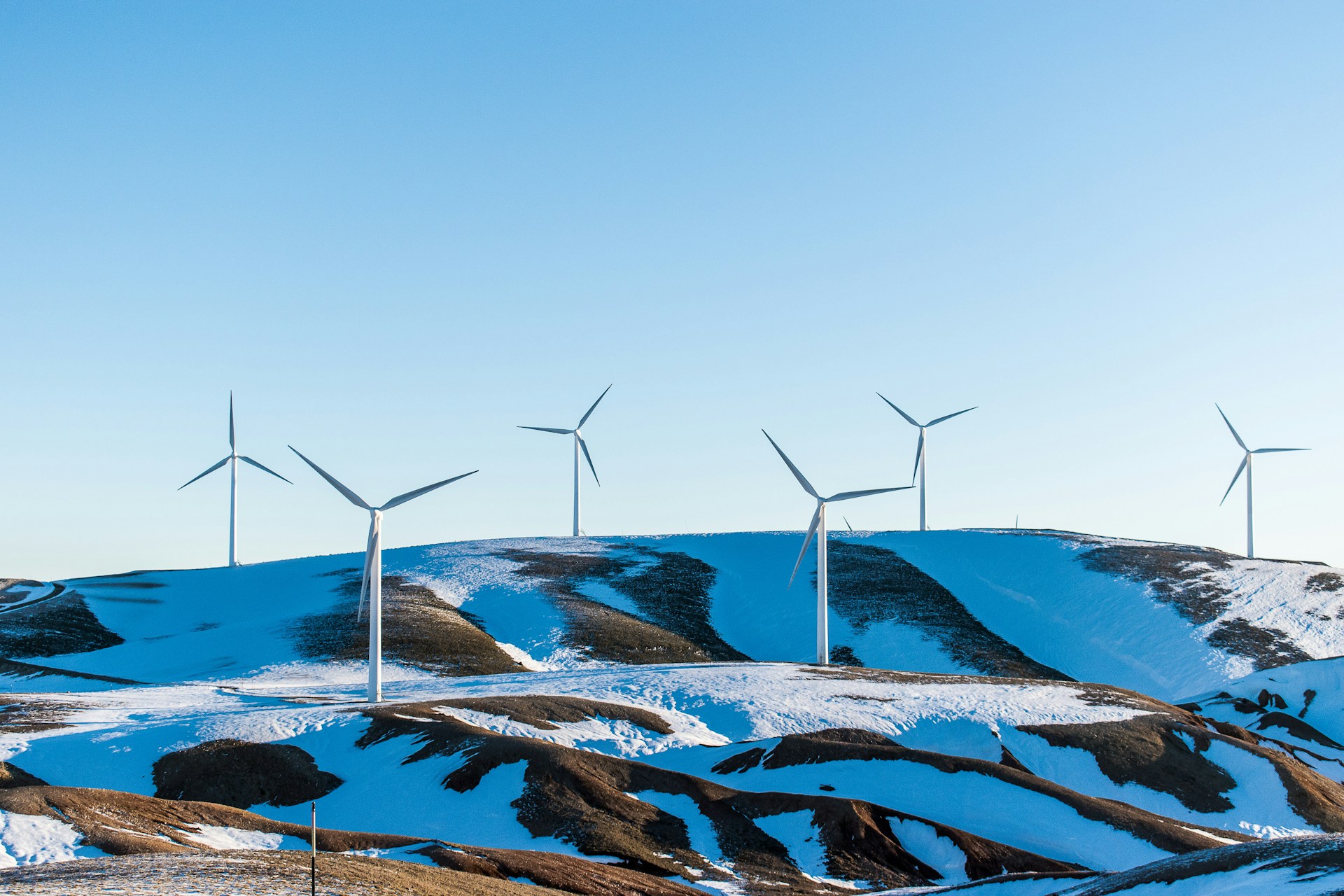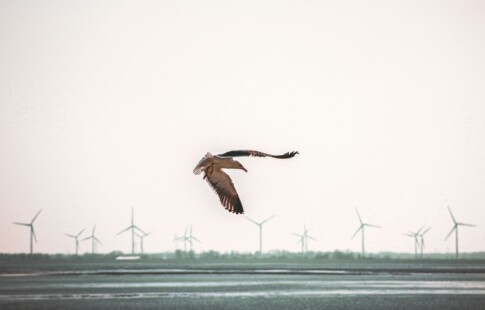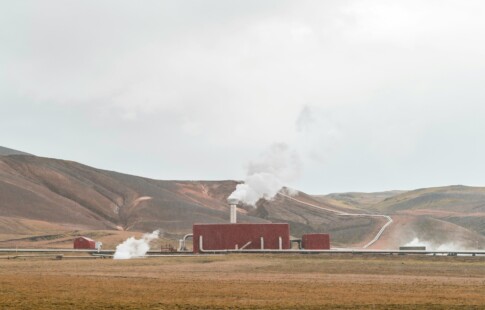
Renewable Energy Initiatives Around the World
We are reader-supported. When you buy through links on our site, we may earn affiliate commission.
Climate change is a global issue. Around the world, countries have organized renewable energy initiatives to reduce their environmental impact. These projects and programs reflect a society more conscious of the effect of carbon emissions and excessive waste.
Though it’s a slow transition the United States is moving closer to clean energy every day. State leaders across the nation continue to push for renewables as they distance themselves from fossil fuels.
Overseas, policymakers have shown the same dedication to preserving the environment. They’ve developed plans to decrease their dependence on fossil fuels.
Dogger Bank Wind Farm, UK
Located more than 70 nautical miles off England’s North East coast, Dogger Bank Wind Farm is the largest offshore wind farm in the world. The project comprises three 1.2 GW phases and is expected to be completed in 2026. This combined 3.6 GW capacity will provide electricity to an estimated six million British homes and save the equivalent of 9,000 vehicles’ emissions annually.
As of October 2023, the first turbine has started producing and transmitting electricity to Britain’s national grid for distribution to homes and businesses. This represents a major milestone in renewable energy development and will be fundamental to the actualization of similar initiatives worldwide.
Mohammed bin Rashid Al Maktoum Solar Park, UAE
The Mohammed bin Rashid Al Maktoum Solar Park is claimed to be the world’s largest single-site solar park based on the Independent Power Producer model. The project cost AED 50 billion and will have a production capacity of over 5,000MW by 2030. Upon completion, it will reduce more than 6.5 million tons of carbon emissions yearly. It will serve as a key infrastructure in meeting the Dubai Clean Energy Strategy 2050.
Since its commissioning in 2013, the solar park has undergone five phases of energy production. The fifth phase became fully operational in June 2023, generating 900 MW of renewable energy and reducing up to 1.18 million tons of carbon emissions annually. Phase 6 will generate 1,800MW and will become operational between 2024 and 2026
Baltic Power Offshore Wind Farm, Poland
Located 23 km north of the Polish coastline, the 1.2 GW Baltic Power Offshore Wind Farm is a joint project between the ORLEN Group and Northland Power. The designated area spans roughly 130 km2 with 76 wind turbines initially planned, although the space can accommodate 100 turbines. So there’s the possibility for expansion in the coming years.
According to the adopted schedule, the farm construction is slated to begin in 2024 and be commissioned in 2026 to provide clean energy to over 1.5 million households. The project is set to revolutionize Poland’s energy sector and will be vital to meeting the country’s commitment to renewable energy.
Yellow Pine Solar Project, United States
The Yellow Pine Solar project is one of the latest renewable energy initiatives in the U.S. Located in Clark County, Nevada, it has received a $400 million investment with plans to produce 500 MW of clean energy and create over 300 jobs. Additionally, the project is expected to generate $23 million in tax revenue to enhance the county’s local roads, schools and services.
Benban Solar Park, Egypt
The Benban Solar Park comprises 41 solar power plants generating a combined 1.8 GW of clean energy. It is currently the largest solar park in Africa, spanning 37 km2 in the Benban region of the Aswan governorate. The project was developed as part of the government’s goal to produce 20% of electricity from renewable sources by 2022. Egypt is suitable for maximizing solar and wind power due to its proximity to desert-filled areas and abundant open spaces.
The program officially launched in 2018, costing over $4 billion and creating at least 20,000 jobs. Ongoing work is underway to increase the park’s capacity to introduce 42% of clean energy into the country’s electricity mix by 2035, powering over one million homes. As of 2023, the project reduces CO2 emissions by two million tons annually.
The TuNur Project, Tunisia
A new solar complex in Southwest Tunisia will aid the country in its goal of providing clean power for Europe. Known as “TuNur,” the project will employ concentrated solar power technology — or CSP technology for short. This technology uses parabolic mirrors connected to molten salt energy storage on an enormous scale. Covering an area almost three times the size of Manhattan, the initiative has required significant investment.
As the energy accumulates, it will follow three separate routes through submarine cable systems until it reaches Malta, Italy and France. In developing the project, Tunisia hopes to revive Europe’s plans of importing inexpensive energy from North Africa, initially abandoned due to political instability in the area. Whether or not this will prove successful, TuTuNur Ltd has already requested authorization to start the project, and the first phase could begin by 2020.
Tidal Lagoon Cardiff, Wales
Tidal Lagoon Power is developing a project with the potential to provide clean energy to every household in Wales. This means supplying electricity to more than three million people through the strength of the ocean’s tides. The system will use around 108 tidal lagoon turbines to harness the second highest tidal range in the world. If it’s successful, it’s safe to speculate that similar projects will show up elsewhere.
This turbine technology doesn’t often see large-scale use, and the cost of the project reflects the ambition of the initiative. The final estimates place the cost at more than eight billion pounds, or 10.13 billion dollars. As of now, the future of the project depends on the success of Tidal Lagoon Swansea Bay, a 320 MW pilot scheme in Swansea which is currently under development.
Solar & Wind Farms, China
China isn’t often associated with clean energy, as they’re the world’s leading contributor to greenhouse gas emissions. Their high population and large industrial sector cause considerable pollution. However, through recent renewable energy initiatives, they’re working toward reducing their massive carbon emissions. Though China may have a more significant interest in the financial benefits of the new technology over its environmental benefits, the effect remains the same.
They’ve used their abundance of free land to develop and operate large-scale solar and wind farms. As a part of the Paris Agreement, China has set ambitious goals for renewable energy. They intend meet 20 percent of their energy needs through renewables by 2030. While this seems comparatively meager, the size of the country is something to take into account.
Toward a Better Future
It’s impossible to ignore the effect of fossil fuels on the environment. Unseasonable weather, fluctuating temperatures and a higher frequency of natural disasters happen on a daily basis. Yesterday’s technology won’t solve today’s problems. Politicians and entrepreneurs are turning toward solar, wind and geothermal sources as clean alternatives to fossil fuels. These renewable energy initiatives can change the climate’s current trajectory.
So, where is the world heading next? Toward a better future — and countries like the United States, UAE, Poland, Egypt and the UK will take us there.
This post was updated on June 19, 2024 with more updated information.
Share on
Like what you read? Join other Environment.co readers!
Get the latest updates on our planet by subscribing to the Environment.co newsletter!
About the author

Jane Marsh
Starting from an early age, Jane Marsh loved all animals and became a budding environmentalist. Now, Jane works as the Editor-in-Chief of Environment.co where she covers topics related to climate policy, renewable energy, the food industry, and more.





